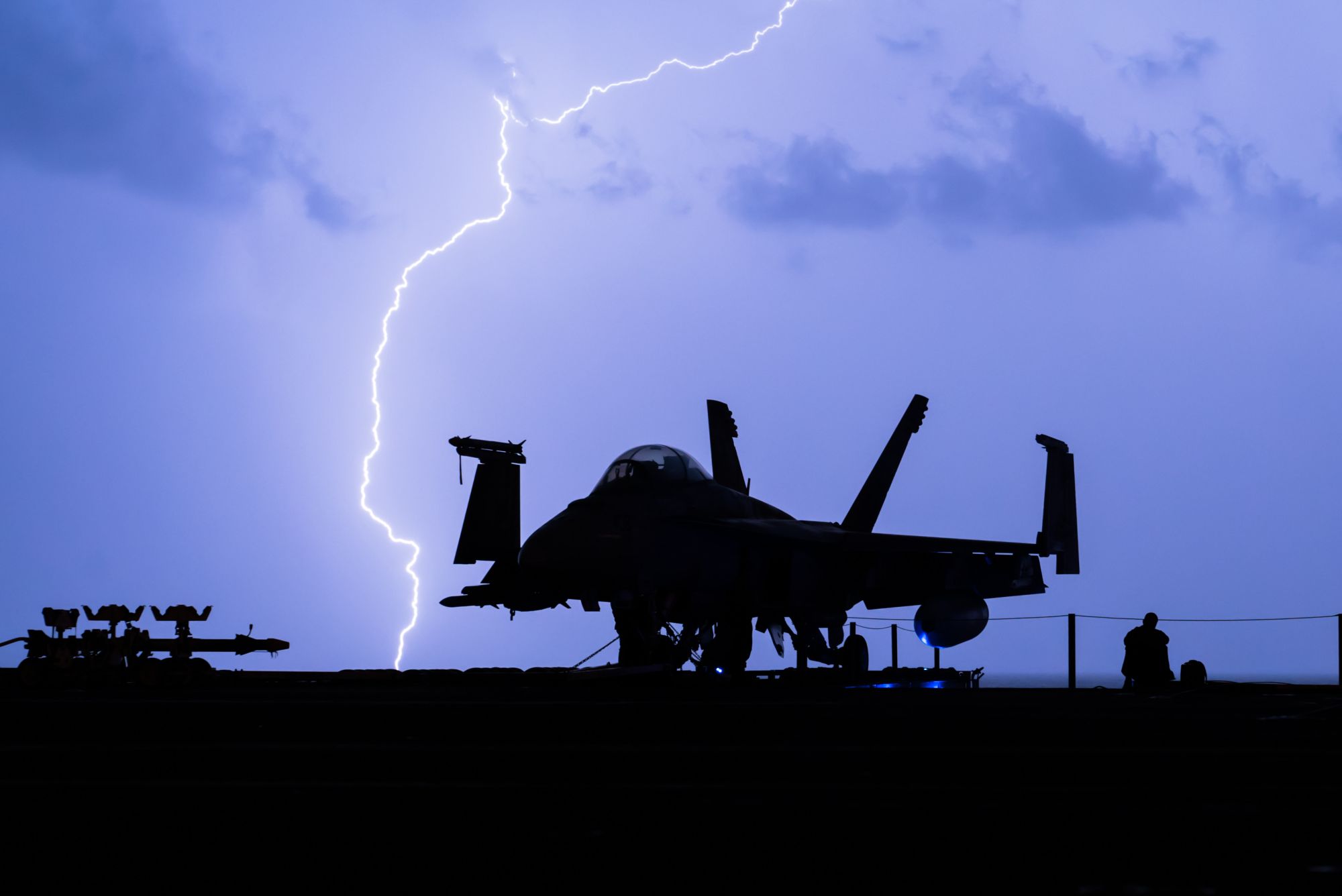Once forbidden to fly in lightning and thunderstorms, the conventional take-off and landing variant of the F-35 Lightning II aircraft, operated by the US Air Force, has reportedly been cleared to fly near storms.
Until now, the F-35A Lightning II, operated by the US Air Force, was prohibited from flying within 25 miles of lightning. However, the F-35Cs used for carrier operations by the Navy and the F-35Bs used by the Marines were exempted from the ban.
According to a report in Breaking Defense, the Pentagon has removed the lightning restrictions for the most popular variant of the F-35 Joint Strike Fighter, enabling the Lockheed Martin aircraft to fly in thunderstorms for the first time since 2020.
In response to a press inquiry from the publication, the Joint Program Office (JPO) spokesperson Russ Goemaere stated that the Defense Department formally withdrew the restrictions on March 19 after developing a hardware and software fix for the lightning protection system used aboard the F-35A aircraft.
The report said the JPO declined to specify how many F-35As have been modified with the new components and cleared for operation in inclement weather, particularly near lightning areas. EurAsian Times could not independently verify these claims.
Though billed as an “all-weather” aircraft, the fifth-generation stealth fighter was not authorized to fly in lightning. Projected by the United States as the best fifth-generation stealth fighter jet in the world, the F-35A Lightning II has not been effective in rain or during thunderstorms despite its cutting-edge capabilities and soaring global popularity.
Why Was The All-Weather Jet Banned From Flying?
Ironically, for a plane known as “Lightning II,” the F-35’s lightning protection technologies have occasionally caused embarrassing issues during development and several years later, after its induction in service.
The aircraft manufacturer, Lockheed Martin, announced the ban in 2020, citing the discovery of damage to one of the systems the aircraft was supposed to use to protect itself from lightning.
The F-35 uses its On-board Inert Gas Generation System, or OBIGGS, to inert its fuel tanks with nitrogen-enriched air so that it can fly safely in lightning-prone situations. It is believed that if lightning was to strike a jet without this system, it could explode.
However, in 2020, damage to one of the tubes that feed inert gas into the fuel tank was discovered during routine depot maintenance of an F-35A at Hill Air Force Base’s Ogden Logistics Complex in Utah. At the time, The F-35 Joint Program Office chose to implement flight limits since it was not certain that the OBIGGS system would operate correctly if the jet was struck by lightning.
Lockheed Martin’s statement at that time read, “As a safety precaution, the JPO recommended to unit commanders that they implement a lightning flight restriction for the F-35A, which restricts flying within 25 miles of lightning or thunderstorms. We are working with the F-35 Joint Program Office (JPO) on a root cause corrective action investigation to determine the next steps.”
The bulk of foreign clients and the US Air Force use the F-35A conventional take-off and landing variant, which is the sole version of the aircraft afflicted by the issue.
The issues, however, are not new. Early in the 2010s, the Pentagon’s weapons tester found flaws in the original OBIGGs system for not putting enough inert gas into the fuel tanks, leading to the prohibition of the F-35 from flying within 25 miles of lightning. Following the OBIGGS’s revamp in 2014, those limitations were lifted before another issue surfaced six years later.
There has been concern that this prohibition could be used by adversaries to their advantage. In a circumstance where there is low stress and minimal threat, an astute enemy could plan tactical operations to coincide with inclement weather in a region where F-35As may otherwise be expected to fly so that it could use its electronic intelligence-collecting capabilities to gather crucial intelligence.

So, Lockheed and the DoD agreed on a remedy for the OBIGGS system. Lockheed’s vice president of F-35 production at the time, Darren Sekiguchi, said that “strengthening several brackets associated with these tubes for OBIGGS” was the solution. Lockheed and the US Air Force started working on the upgrade in 2021, which would make it possible to fix the tubes inside the fuel tank and stop them from vibrating.
After implementing the initial hardware and software modifications to OBIGGS, the JPO had hoped to clear the F-35 to operate in lightning in 2022. However, officials at the time said they judged the anticipated enhancements were insufficient to solve safety concerns.
At that time, the JPO stated that it did not have a schedule for implementing further repairs that would enable it to remove restrictions. The program office would, however, continue retrofitting the Air Force F-35A fleet with the OBIGGS improvements, which included installing software that alerted the pilot if OBIGGS performance was declining and stronger tubes and fittings that could survive flight vibrations.
The coordinated efforts seem to have worked after a long four-year period. In its latest interaction with Breaking Defense, the JPO spokesperson said, “The fix included a more robust On-Board Inert Gas Generation System (OBIGGS) hardware design along with software updates. Testing for these efforts was a combination of lab and flight testing.”
Further validating that assertion, the US Air Force’s Air Combat Command also reportedly said that OBIGGS “underwent extensive hardware testing and analysis,” and “once it was certified as safe to operate, the distance restriction was reduced.
- Contact the author at sakshi.tiwari9555 (at) gmail.com
- Follow EurAsian Times on Google News




